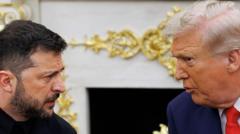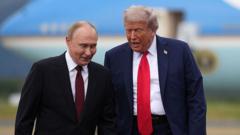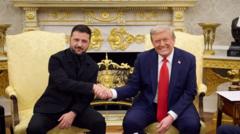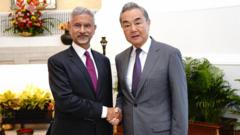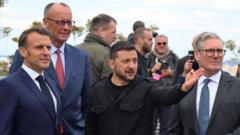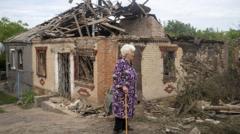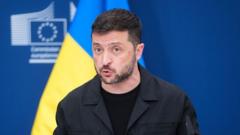The map displayed during Trump’s meeting with Zelensky showcased areas of Ukraine under Russian control, reflecting the challenging dynamics of the ongoing conflict. While Trump stressed the reality of Russian territory claims, Zelensky pushed back, presenting his own visual data to argue for Ukraine’s territorial integrity.
The Oval Office Map: A Symbol of Diverging Perspectives in the Ukraine Conflict
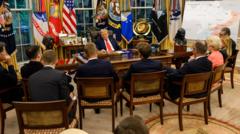
The Oval Office Map: A Symbol of Diverging Perspectives in the Ukraine Conflict
In a recent meeting, a prominent map displayed in the Oval Office highlighted the territories occupied by Russia, sparking contrasting views between President Trump and President Zelensky.
The map in the Oval Office underscored the stark realities of the Ukraine war, with a significant portion of Ukrainian territory shaded in red, indicating areas under Russian occupation. During a conversation with Fox News, former President Donald Trump emphasized the considerable territory taken by Russia, suggesting a need for Ukraine to consider territorial compromises in discussions with Vladimir Putin.
The Ukrainian leadership, represented by President Volodymyr Zelensky, presented its own assessments and territorial claims during the talks, contesting the impressions given by the map. Zelensky stated that he was actively discussing control over these territories and was determined to clarify any misconceptions regarding the actual state of the conflict, particularly how much land was indeed occupied by Russian forces.
In the wake of their meeting, the diverging perspectives were evident. Trump highlighted the military superiority of Russian forces, noting that regions like Donbas now see a high percentage of territory under Russian control. In response, Zelensky made a case for the accuracy of Ukraine's maps, arguing against the perceived narrative of extensive Russian success, stating that in the past 1,000 days, less than 1% of Ukrainian territory had been lost to occupation.
The ongoing analysis by various think tanks revealed different assessments of territory control, with the Institute for the Study of War corroborating much of the White House's estimates, indicating a complex and dynamic frontline. Despite recent Russian advances in certain regions, significant parts of Donetsk remain populated with Ukrainian civilians who would staunchly resist ceding territory to Moscow.
As military dynamics evolve, both leaders continue to navigate a landscape filled with conflicting data, local resistance, and the pressing reality of international diplomacy. Trump's acknowledgment of the usefulness of the map was met by Zelensky's resolute determination to reclaim lost territory, illustrating the challenges of aligning differing national priorities amid a devastating war.

